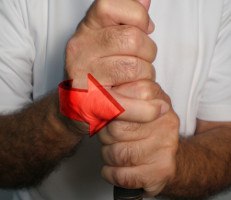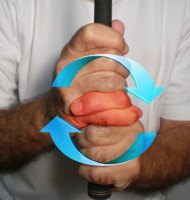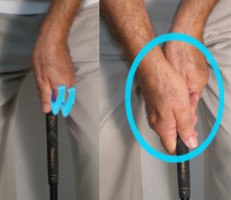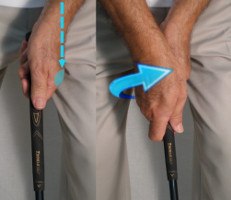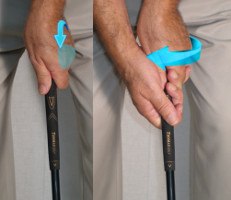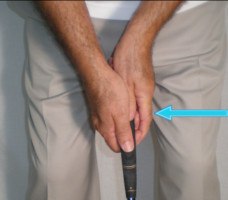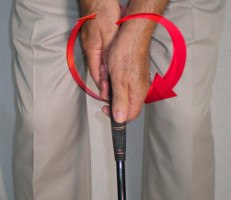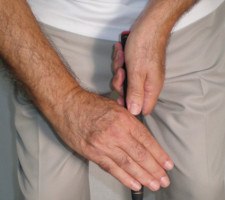|
Pros and Cons of Every Golf Grip Style |
Best Grip? Overlapping vs Interlocking |
Grip style: Interlocking |
Hand position: Neutral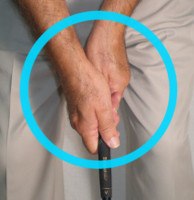 |
Putting grip style / hand position: Long putter with hands separated |

The perfect swing begins with the perfect grip.
Adam Scott grip – like his textbook takeaway, swing plane and follow-through – is a thing of beauty. His left and right hands are square to each other and the clubface. The Vs formed by both thumbs and forefingers are aligned with a point between his right shoulder and his chest’s center. His grip pressure is firm but light.
But even Scott has to work to maintain a proper grip. His natural tendency is to rotate the hands into a strong position, with the Vs pointing closer to his right shoulder. With a swing as finely tune as Scott’s, any deviation can create problems like hooks or a low ball flight.
To make sure his grip is where he wants it, Scott checks the position of his left hand before every shot. Only then does he proceed into his setup.
Scott’s swing has always been the envy of his peers. His putting, not so much. After years of struggling on the greens, Scott switched to a long putter in 2011. Long story short (so to speak), improved putting propelled the Aussie to No. 1 in the world rankings in 2014.
Adam Scott grip with the long putter is simple as can be. He uses the left hand to anchor the top end to his upper chest. His right hand points downward, open and facing the target, gently holding the club between thumb and forefinger while the other fingers dangle to the side. This nearly pressure-free grip allows Scott to sweep the putter effortlessly back and through.
Update: Adam Scott, a professional golfer known for his excellent ball-striking, uses a grip known as the “Scotty Cameron” grip or the “reverse overlap” grip. Here's how to do it:
- Place your left hand on the club: For right-handed golfers, place your left hand on the club first. Position the grip across the base of your fingers, just above the palm. The club should run diagonally across the fingers, with the heel pad of your hand resting on top of the grip.
- Position your fingers: Wrap your left hand fingers around the club, ensuring that the pad of your left thumb rests on top of the grip. Your left thumb should point down the shaft, slightly to the right side.
- Place your right hand: Bring your right hand to the club and position it just below your left hand. The pinky finger of your right hand should overlap the gap between your left index and middle finger.
- Position your right thumb: Place the pad of your right thumb on the left side of the grip, pointing down the shaft. Your right thumb and index finger should form a “V” shape, pointing toward your right shoulder.
- Connect the hands: Allow the lifeline of your right hand to rest snugly on top of your left thumb. This connection helps promote stability and control throughout the swing.
- Check your grip pressure: Maintain a relaxed grip pressure, neither too tight nor too loose. This will allow for a free and natural release of the club through impact.
Remember, grip preference can vary among golfers, and it's essential to find a grip that feels comfortable and promotes control for you. Experiment with different grips, including the Adam Scott grip, and choose the one that suits your game best. It may be helpful to consult with a golf instructor or club fitter for personalized guidance on your grip.
